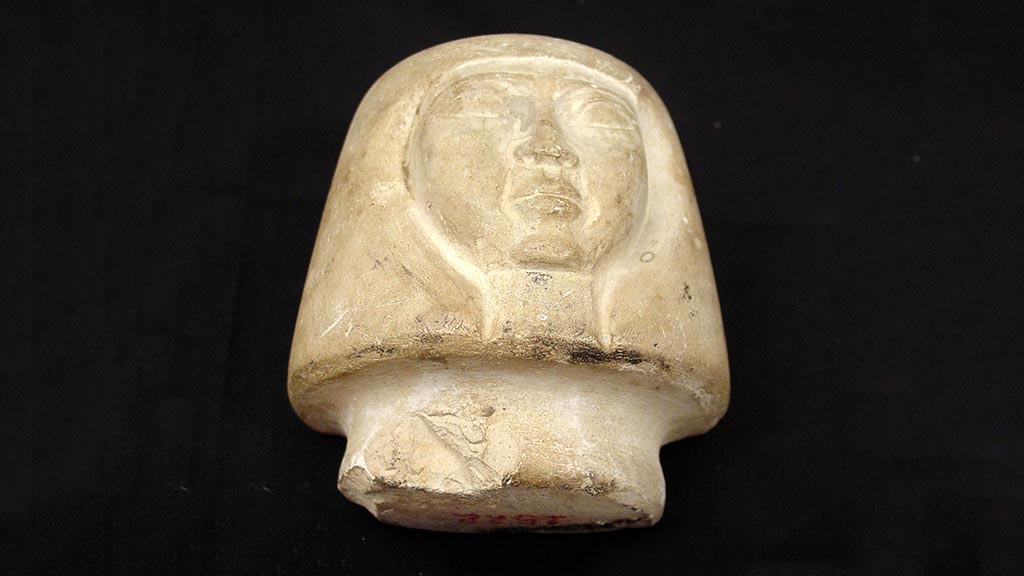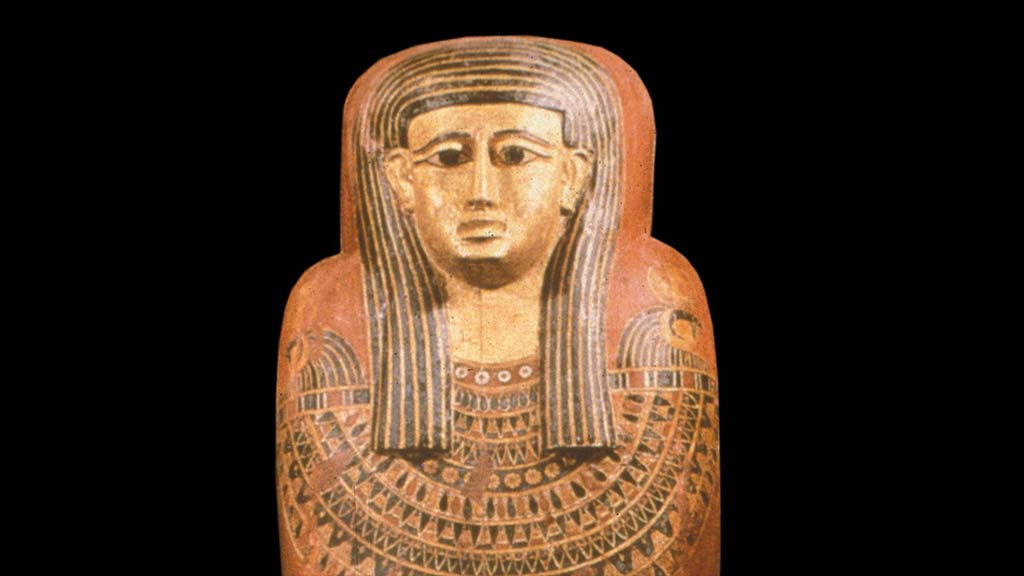Egyptian Mummification

Rituals
The Funeral
On the seventieth day after a person's death, when the embalming and wrapping were completed, the mummy was placed in a coffin and taken to the tomb. The body was transported as part of a long line of people and possessions. Close to the mummy were two women representing the goddess Isis and her sister Nephthys. Behind these two was a group including mourners, priests, and servants carrying tomb furnishings. The canopic chest with the mummy's internal organs was carried separately in line. One of the priests burned incense and sprinkled milk along the path. At the tomb, the group was met by dancers and a priest who read spells in honor of the dead.
Next came the very important Opening of the Mouth ceremony, based on the Osiris legend. A priest wearing a jackal-headed mask representing the god Anubis held the mummy's coffin upright while another priest touched the mouth of the mummy with ritual instruments. The Egyptians believed that from a person's death until the performance of this ceremony the body could not hear, see, or speak. Once the ceremony was finished, the use of the senses returned and the deceased could eat and drink in the afterlife After the ceremony an offering of food, ointment, and clothing was given to the deceased.
This completed, a large funerary banquet was enjoyed by the mourners, with entertainment in praise of the dead provided by musicians and dancers. While the banquet was going on, the deceased was placed inside the tomb, and the footsteps of those who had been inside were swept away. Now the deceased's soul could return to the body.
"My mouth is opened by Ptah and what was on my mouth has been loosened by my local god. Thoth comes indeed, filled and equipped with magic; and the bonds of Seth which restricted my mouth have been loosened. Atum has warded them off and has cast away the restrictions of Seth." Spell 23 - The Book of the Dead

